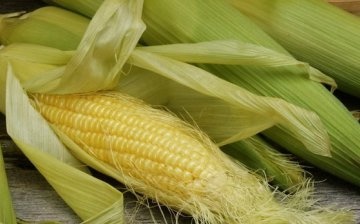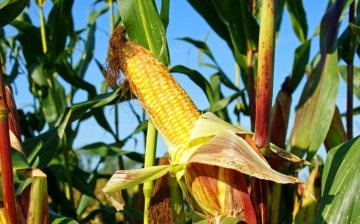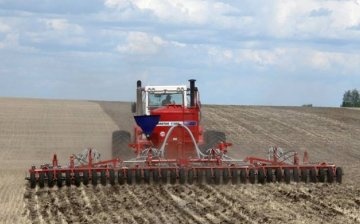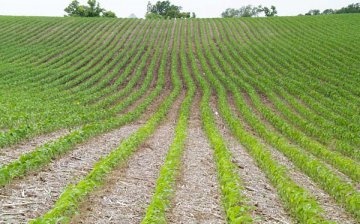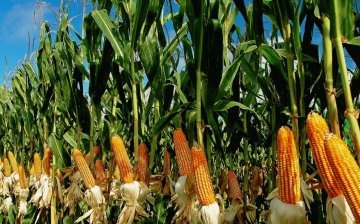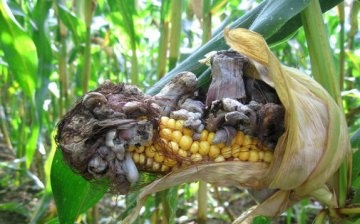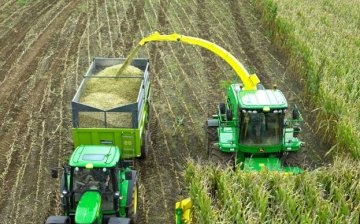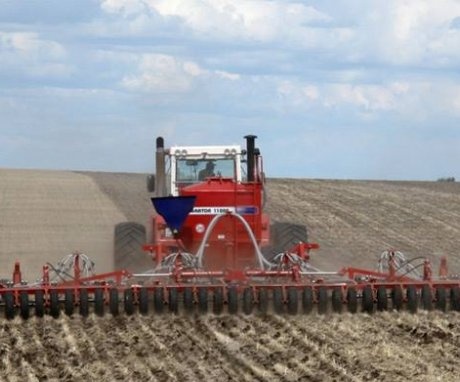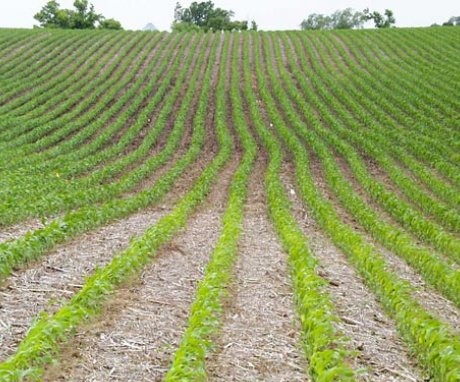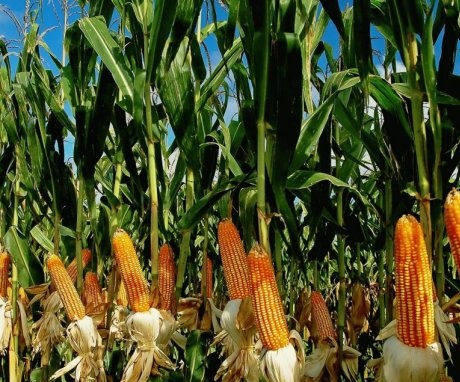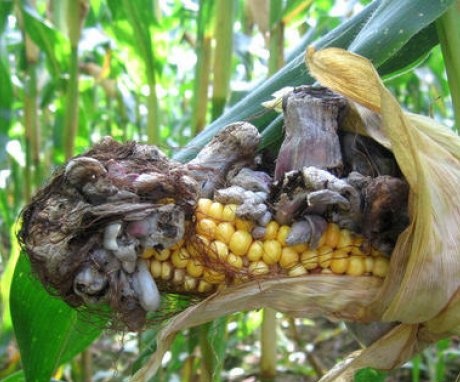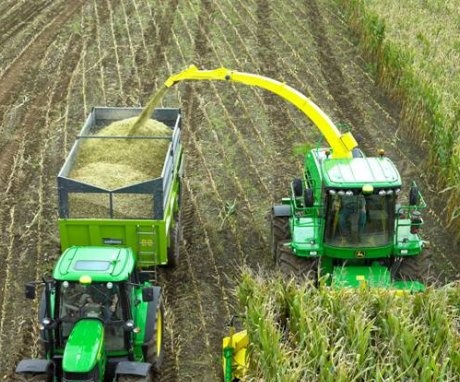The right technology for cultivation of corn for silage
Of fodder crops, it is especially appreciated corn, the green mass of which goes to the highly nutritious silage. It has a high content of proteins, proteins, fiber, vitamins, and has excellent digestibility. Cultivation of a plant is not particularly difficult. The main emphasis in the cultivation of fodder maize varieties is placed on the composition of the soil, its processing, application of fertilizing during planting maintenance.
The processes of the technology of cultivation of corn, or maize, differ depending on the purpose of the plant. If the crop is grown for silage, then special attention should be paid to tillage before sowing, caring for seedlings, and harvesting. The timing of these processes, their sequence depends on the climatic conditions of the growth of the culture.
Content:
- The best predecessors for silage maize
- Soil preparation, planting dates
- Basic rules for planting corn for silage
- Tips for caring for your forage crop
- Fight against plant diseases and pests
- Terms and rules for harvesting corn for silage
The best predecessors for silage maize
Heat-loving plant corn not afraid of drought, and some of its varieties are also frost-resistant. The composition of the soil is important for the plant, therefore, cereals and legumes are suitable for it as predecessors. She grows well after potatoes, buckwheat. But sugar beets will not leave zinc reserves in the soil for corn, having spent them completely. The lack of an element will affect the growth and formation of the cobs.
Not suitable for the role of the predecessor of maize and sunflower, millet.
But after sowing corn, other crops will grow beautifully. Therefore, it can be cultivated in one place permanently for up to eight years in a row. But with a shortage of sown land organic fertilizers after three to four years, alfalfa is sown in corn fields, alternating with maize a year later.
To obtain more green mass for silage, soybeans are grown next to fodder corn varieties. The harvest will immediately increase significantly. The choice of a site for sowing a crop is important and will affect its yield.
Soil preparation, planting dates
For sowing corn, loamy, light and medium, soils, as well as sandy are considered suitable. They must hold water well, contain organic matter, and be light. You can not sow corn in those areas where groundwater is close to the surface, and the acidity of the soil is increased. It is best to choose the southern slopes for sowing the plant, which are closed by trees or hills from the north and northeast wind.
They begin to cultivate the land in the selected area in autumn, plowing it and introducing organic and mineral fertilizers.
Before sowing in early spring, nitrogen fertilizers are applied, duplicating them three to four weeks after planting corn. To improve the composition of the soil, it is necessary to feed the site with potassium and phosphorus. The form of fertilizer can be liquid or granular.If the soil for corn planting is acidic, then it is lime. In order to preserve moisture, maize plots are harrowed with subsequent cultivation. Uniform planting of the seeds of the plant will ensure the compaction of the soil.
Two weeks before sowing, corn seeds are treated with herbicides such as Vitavax, Gaucho. After the seed has been in solutions for an hour, it is thoroughly dried. They begin to sow corn for silage when the ground warms up to 10-12 degrees Celsius, which happens in the second half of May. Sowing at an earlier date is carried out only using seeds of varieties that are resistant to cold, embedding them at a shallower depth. Properly prepared soil, pre-treatment of seeds allows you to achieve high yields of forage crops.
Basic rules for planting corn for silage
It is necessary to plant corn seeds according to certain rules:
- With the square-nested sowing method, several pieces of grains are placed at the corners of the square. This method of planting allows the plants to receive sufficient nutrition and lighting.
- In fields with a small number of weeds, corn is sown in strips with a distance of twenty-five centimeters from each other.
- The planting density of the plant should be between fifty and one hundred kilograms of grains per hectare of field. The thickening of the seedlings will retain moisture in the soil and prevent weeds from growing.
- Row spacing in corn plantings should be no more than sixty centimeters. During the rainy summer, the distance is reduced.
- After sowing, the field is rolled up with special equipment, then the seedlings will appear quickly and amicably.
- The seeding depth depends on the soil composition. On the lungs it is four centimeters, on the heavy - two. In the early stages, they are embedded two to three centimeters deep, and in hot arid regions - five or six centimeters.
The planting of corn kernels on silage is carried out mechanically in accordance with climatic and soil conditions.
Tips for caring for your forage crop
It is easy to care for your corn crops. Most often, the procedure consists in loosening the soil with a harrow. For the first time, they harrow before the emergence of shoots, then after the formation of two or three leaves on the shoots. Processing is carried out in the morning, when the seedlings are not so fragile.
When five to six leaves appear, the aisles are loosened, applying fertilizers to a depth of ten centimeters. After two weeks, the procedure is repeated with a seeding depth of seven centimeters.
Mass planting maintenance is simple and focused on weed and forage pest control.
Constant weeding of planting rows allows plants to grow quickly. Processing must be combined with feeding plants with nitrogenous fertilizers. When plants reach a height of thirty centimeters, then their spud... Less often, loosening of the soil is carried out in corn fields if the summer is dry and there are few weeds growing on them.
Fight against plant diseases and pests
Fungal diseases of corn include blister smut, dust smut, helminthosporiosis. They develop as a result of planting diseased plant seeds, and wet weather only intensifies the symptoms of diseases:
- A distinctive feature of blister smut is the defeat of all parts of the plant, on which swellings and growths appear.
- When infected with a head smut during the formation of inflorescences, the fungus forms spores of yellow-brown color, which cover both panicles and young cobs of the plant.
- With helminthosporiosis, sharply outlined spots of gray or reddish tone are visible on the leaves. The leaves begin to wither and dry out. The formation of bacterial rot that affects the stem, leads to its cracking, sometimes the death of the entire plant.
To rescue corn from diseases can dressing seeds before sowing, timely fight against weeds... Spraying them with Bordeaux liquid will also help reduce the percentage of contamination of the plantings. The norm for its use is four liters per hundred square meters.
Insects are often carriers of dangerous plant diseases:
- The stem moth lays its eggs on the underside of the leaves before the maize throws out its panicles. After the appearance of caterpillars, damage is clearly visible on the fibrous bundles of the plant.
- The Swedish fly, its larvae damage the growth points of the corn, preventing it from developing. Often the attack of the parasite leads to the death of seedlings.
- A grain moth lays eggs on the cobs of a plant, and then the caterpillars that emerge from them destroy the corn kernels, turning them into a gray mass.
You can fight pests by pre-dressing the seeds before planting, timely harrowing, rolling the area before and after planting corn, and deep plowing it. The introduction of zinc sulfate into the soil will reduce damage to seedlings by the larvae of the Swedish fly. To combat all pests of culture, spraying with preparations such as Karate is effective. If the agrotechnology of growing corn is respected, then its crops are not afraid of diseases or pests.
Terms and rules for harvesting corn for silage
Clean up corn for silage it is necessary during the period when the grain picks up waxy or milky-wax ripeness. If frosts begin, then it is necessary to remove the green mass after its damage within three days.
You can get a high-calorie livestock feed from corn by removing it from the fields in time and correctly processing it for silage.
Mowing plants in height is carried out up to ten centimeters, increasing it during the phase of waxy ripeness of corn. In this case, the percentage of nutrients in the green mass will rise. When harvesting for silage, attention is paid to the moisture content of the raw material. It should not exceed seventy percent. To keep the mass moist, it is advisable to remove it on rainy days.
Finely chopped green mass of corn is mixed with preservatives, which include lactic acid bacteria, and poured into special trenches. There is also silage of the crop without air access.
More information can be found in the video:



